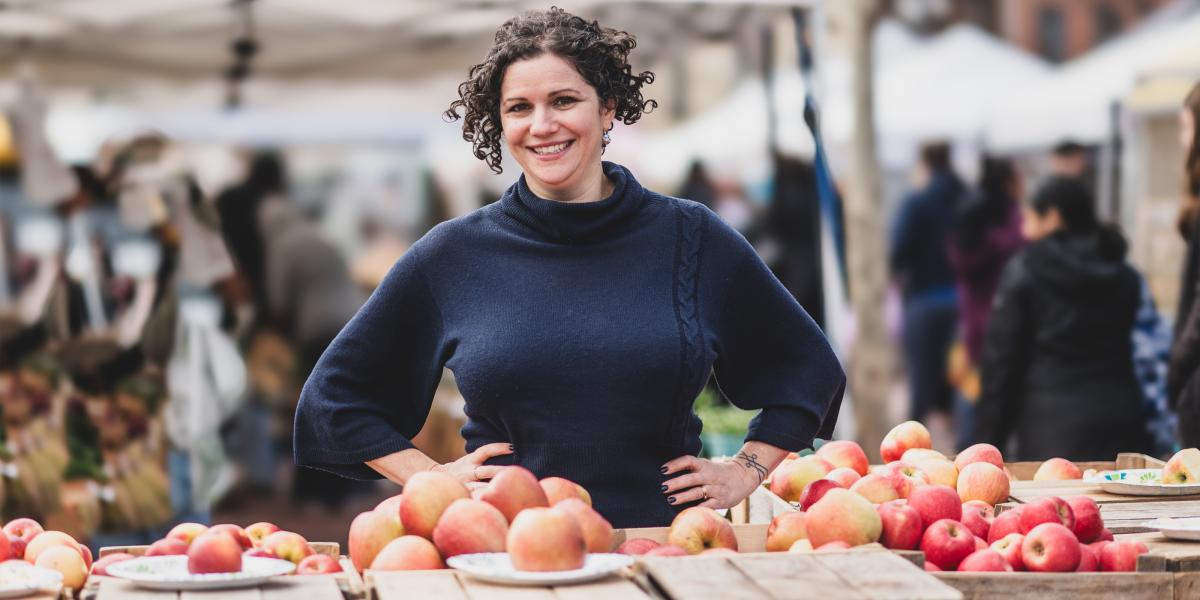Cooking Skills: The Missing Ingredient in Nutrition Efforts
If we want to help people eat better, we need to teach them how to cook.
When you are a chef, everyone asks you questions about cooking.
The queries, like how to cook fish or braise lamb, begin as soon as people learn that I was a chef in some New York City’s highest-rated restaurants. As a line cook and later an executive chef, I moved from French fine dining to cooking more casual, local, and seasonal fare. I loved the frenetic energy and pace of restaurant kitchens, the physicality and challenge of the work, and the creativity required to create daily changing menus.
Eventually, for myriad reasons, I changed careers to study public health policy. My main interest, of course, was food—and how our food system makes healthy diets difficult. In recent years, nutrition experts and policymakers have sought to reduce upstream barriers to healthy diets. They helped place grocery stores and farmers markets in underserved areas, set up mobile produce trucks, and strengthened nutrition assistance programs like SNAP and WIC. Better school meals and food labels have also been important improvements.
But these policies fail to address a key fact: At the end of the day, someone has to make dinner. Someone has to plan the meals, shop, cook, and clean up. Make no mistake, this is hard work. The barriers extend beyond a lack of access and time, beyond high prices and nutrition knowledge.
Cooking skills, I learned through my research, also play a huge role in shaping food choices, diet quality, and diet-related disease risk. As a society, we’ve largely stopped teaching people how to cook. If you don’t know how to cook an eggplant, or fish, or lentils, you won’t purchase them, and you certainly aren’t turning them into a meal. Too often, cooking skills are left out of the conversation about how to improve diets. The HHS’s Dietary Guidelines for Americans, for example, barely mention cooking at all.
At the end of the day, someone has to make dinner. Someone has to plan the meals, shop, cook, and clean up. Make no mistake, this is hard work.
I’ve spoken with or surveyed thousands of people about cooking. I’ve asked them why and how they cook, what healthy eating means to them, what makes home-cooked meals challenging, etc. I’ve also taught cooking classes in community health centers and other settings. I’ve learned that technical cooking skills are important, but confidence, self-efficacy, and how people feel about cooking are just as critical. Many people learn a few key recipes (often from their mothers), and then cook those and similar foods most of their lives. When they need to change their diets later in life (often because of health concerns), they find it challenging.
Planning for and preparing healthy home-cooked meals takes time, skills, and mental energy. Think about your local grocery store: What is on the shelves? Much of the food is highly processed, which is detrimental to health in a multitude of ways. Yet ultra-processed foods (like chicken nuggets and frozen pizzas) make up more than 60% of most American’s diets, according to the National Health and Nutrition Examination Survey. Even when people cook at home most days, more than half of their calories come from ultra-processed foods. Hot dogs and mac ’n’ cheese from a box is a home-cooked meal, but it’s not healthy home cooking. This may explain why adding grocery stores in areas with low food access doesn’t always improve diet quality and health.
I love food, and I love cooking. To me, cooking is a source of joy and a way to express creativity. It doesn’t have to be that for everyone, but cooking skills should be available to everyone and something we value as a society. After all, cooking and food help us keep our cultural and family traditions alive. Food brings us together as families and communities.
Schools and community centers, as well as preventive health care and nutrition assistance programs, can all be leveraged to teach people how to cook. I’ve seen how learning basic cooking skills and healthy recipes in a supportive setting can expand people’s palates and empower them to start cooking more healthy meals at home, increase vegetable intake, and, in some cases, allow them to reduce blood pressure medication or lower their HbA1c (an indicator of diabetes).
As we work together to solve societal issues of poor diet quality, food insecurity, obesity, and diet-related chronic diseases, we must work toward policy, systems, and environment solutions to food-related structural inequalities. And we also need to invest in policies and programs to build people’s capacity to cook.
